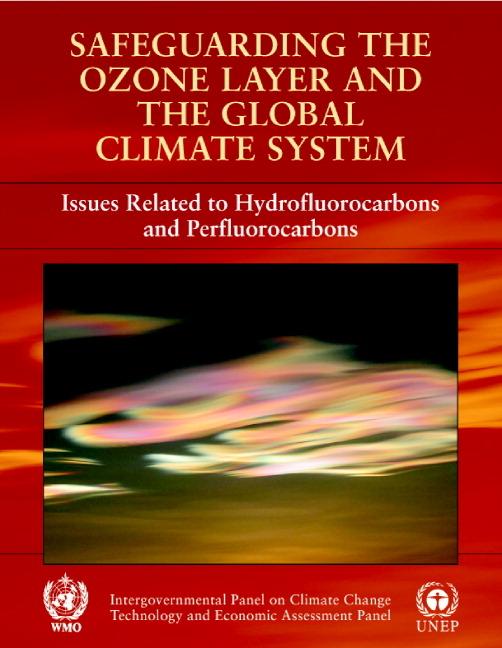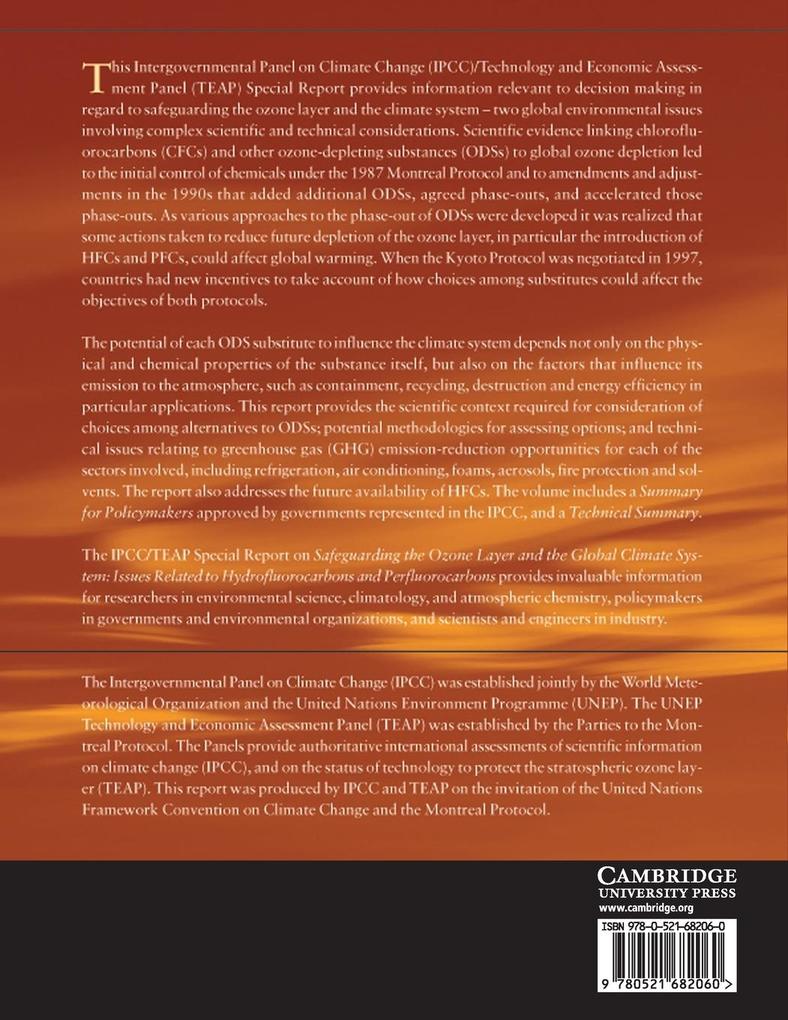
Zustellung: Do, 03.07. - Mo, 07.07.
Versand in 5 Tagen
VersandkostenfreiBestellen & in Filiale abholen:
Since its initial inception in 1987, it has been realized that some actions taken to reduce depletion of the ozone layer under the Montreal Protocol could also influence global warming. When the Kyoto Protocol was negotiated in 1997, countries had new incentives to take account of how choices among substitutes to ozone-depleting substances could affect the objectives of both Protocols. This IPCC/TEAP Special Report provides the scientific context required for consideration of these choices. It provides invaluable information for researchers, policy-makers and engineers in academia, government, environmental organizations, and industry.
Inhaltsverzeichnis
Foreword; Preface; Summary for policymakers; Technical summary; 1. Ozone and climate: a review of interconnections; 2. Chemical and radiative effects of halocarbons and their replacement compounds; 3. Methodologies; 4. Refrigeration; 5. Residential and commercial air conditioning and heating; 6. Mobile air conditioning; 7. Foams; 8. Medical aerosols; 9. Fire protection; 10. Non-medical aerosols, solvents, and HFC-23; 11. HFCs and PFCs: current and future supply, demand and emissions, plus emissions of CFCs, HCFCs and Halons; Annex 1. Authors and Reviewers; Annex 2. Glossary; Annex 3. Acronyms and abbreviations; Annex 4. Units; Annex 5. Major chemical formulae and nomenclature; Annex 6. List of major IPCC Reports.
Produktdetails
Erscheinungsdatum
23. Februar 2006
Sprache
englisch
Seitenanzahl
490
Herausgegeben von
Intergovernmental Panel On Climate Chang
Verlag/Hersteller
Produktart
kartoniert
Gewicht
1221 g
Größe (L/B/H)
280/216/26 mm
ISBN
9780521682060
Entdecken Sie mehr
Bewertungen
0 Bewertungen
Es wurden noch keine Bewertungen abgegeben. Schreiben Sie die erste Bewertung zu "Safeguarding the Ozone Layer and the Global Climate System" und helfen Sie damit anderen bei der Kaufentscheidung.










